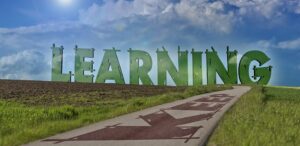
Optimizing College Services for Adult Learners
With the influx of so many ‘adult’ learners flooding college campuses these days, it’s a challenge for any institution to keep up with the evolving sets of metrics that that population is expecting. While each individual student poses their own unique set of needs for a successful college journey, as a group, these ‘mature’ learners present a decidedly different trajectory than their younger, less evolved class cohorts. And in many cases, the services they need to succeed are not yet offered as an integral aspect of the higher education strategy.
Fortunately for the learners (and colleges in general), scholars studying the situation have identified where this population needs assistance and how schools can respond to those realities. To ensure the success of this particular student demographic, schools must adapt their processes and programs to fit the current and evolving educational requirements of their older, more experienced learners.
Barriers and Bonuses: Adult Learners Find Both
The uptick in the number of ‘mature’ students on college campuses indicates a shift in thought about the value of education.
Bonuses:
In some cases, life circumstances have changed and people now have both the resources and the time opportunity to pursue the new goal. In other cases, an existing career requires upskilling or additional training, or the thought of entrepreneurship has finally been prioritized. Even retirees are returning to college classrooms seeking to enhance their lives with more money, more knowledge, or both.
Barriers:
However, the way schools are set up now presents significant challenges to many of these students.
Class calendars often follow the typical school schedule of weekdays from 8 am to 5 pm. Many adult learners have other obligations during these hours that prevent them from attending.
The cost of college can also be prohibitive to a successful college career for adult students. Often, their personal financial situation isn’t conducive to taking on the expenses of tuition and books. Sometimes, their effort is stalled because of the (expensive) need to achieve prerequisites before approaching the desired subject matter. In still other cases, the opportunity for financial aid isn’t clear or hasn’t been shared with them, so they’re unaware of the availability of those support services.
Not least imposing is the technical nature of today’s campuses. Much of the communication between school and student and teacher and student is through digital devices, most of which require relatively sophisticated knowledge about ‘apps’ and related technology. In many cases, older students aren’t aware of the technologies involved or aren’t confident in their ability to master them.
The number of adult learners motivated by the bonuses and not put off by the barriers to higher education is growing, and their presence is significant in colleges around the country. In 2022, almost one in four (23%) of all college students in America were over the age of 25, underscoring the importance to the school of amending the types and levels of services needed to support this burgeoning sector of their student body.
Opening Educational Doors for Adult Learners
From the school’s perspective, modifying existing service streams to better serve the adult learner population should be a no-brainer. As it has been with all their constituents, easing the pathways into, through, and beyond the higher education experience for the older student both fulfills their mandates as public resources while also cementing their foundation as a critical element of society. Fortunately for college administrators, a noted industry expert offers insights and guidance on how to best serve these learners.
Inside Higher Ed (IHE)
Owned by Times Higher Education, IHE is the higher ed industry’s premier source for information and insights into educational best practices, trends, and more. Its 2023 report, Modernizing Postsecondary Policy to Better Support Adult Learners, specifically addresses how existing policies and practices impede the institution’s ability to better serve this population. It also includes suggestions and steps those schools can take to remediate those barriers for their students. By reworking how higher education resources are offered to optimize the educational success of this group (and other marginalized groups) of learners, the national college network as a whole can generate up to $100 billion each year in increased workforce productivity value.
The IHE suggests five focuses for schools and their constituents to address the unmet needs of their adult learner students:
Credit Transfer Pathways allow those (many, many) students who have some college credits but no college credentials to retain the value of those past courses in pursuit of their new and next educational goals.
Credit for Prior Learning is also an enticing element for adult learners. People who’ve mastered career skills should have those skillsets recognized as they apply them to new subject matters.
Flexible funding options are also critical to the return-to-school project for adult learners. Today, a myriad of obsolete rules and standards render some potential learners ineligible for student loans or other supportive avenues to financial resources.
Current Labor Market statistics should also be part of the reconfiguration process. ‘Workforce training’ was not the basis of educational funding until very recently, yet the demand for workers is pushing these schools to deliver exactly that asset: a well-trained workforce.
Not least significant is the need to provide services tailored to the needs of these older students. ‘Emergency Financial Aid’ opportunities, for example, that can be used to cover childcare costs, transportation, etc., can prevent a drop-out situation when the learner experiences the need for this type of resource (which many will).
A college education offers much more than just additional information and knowledge. It also facilitates improved work opportunities, career options, and enhanced financial capacities. More ‘older’ people recognize these realities than ever before, and today’s colleges are their first and best choice for attaining those assets. Schools can improve their bottom line and community profile by better serving this burgeoning population of adult learners.


